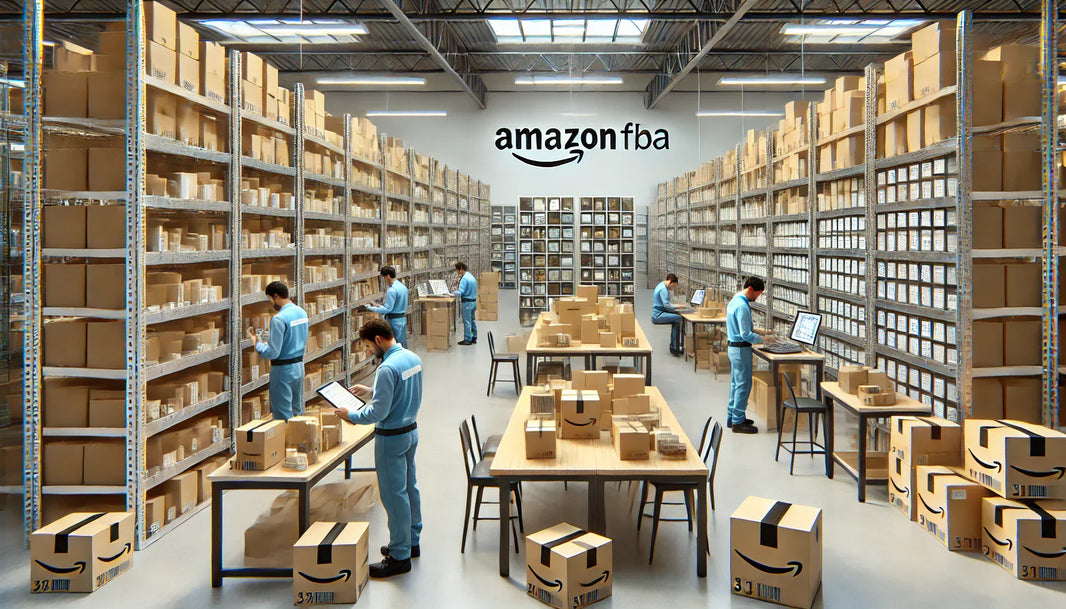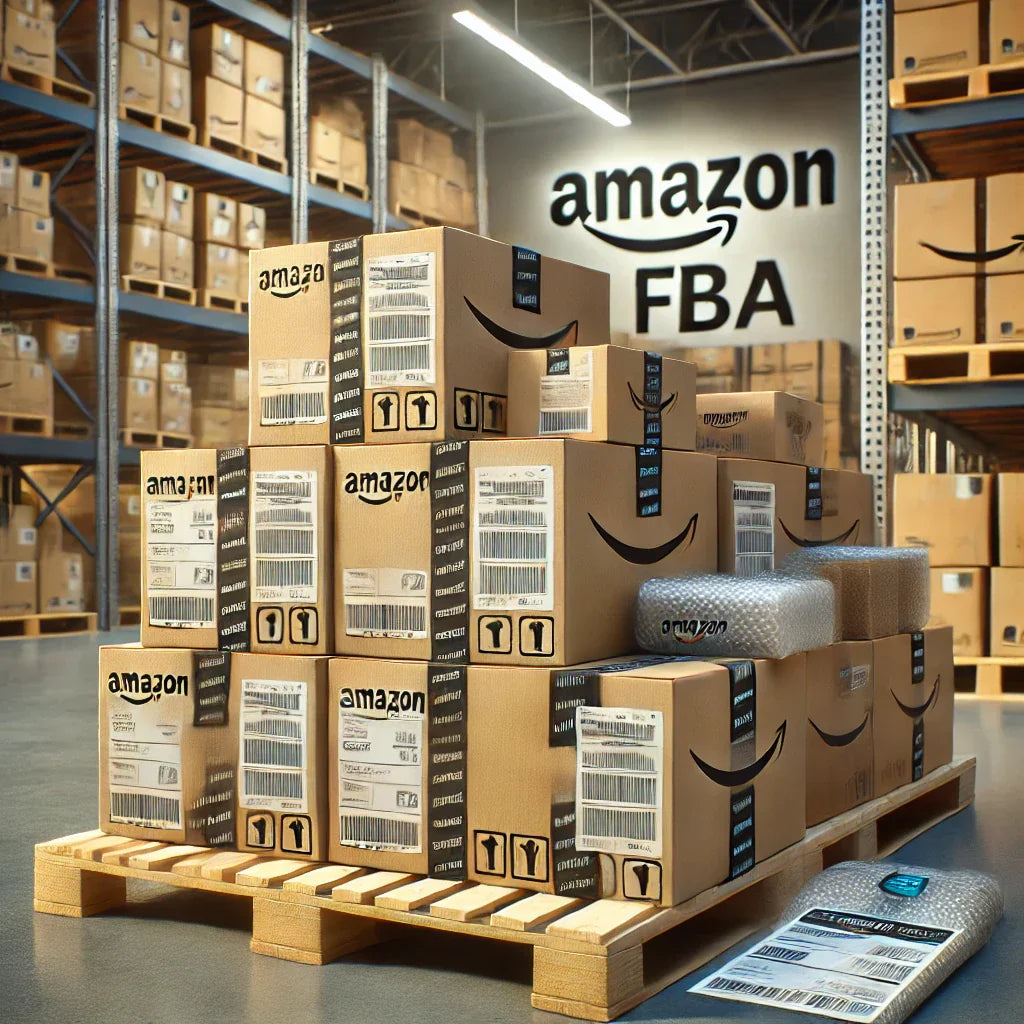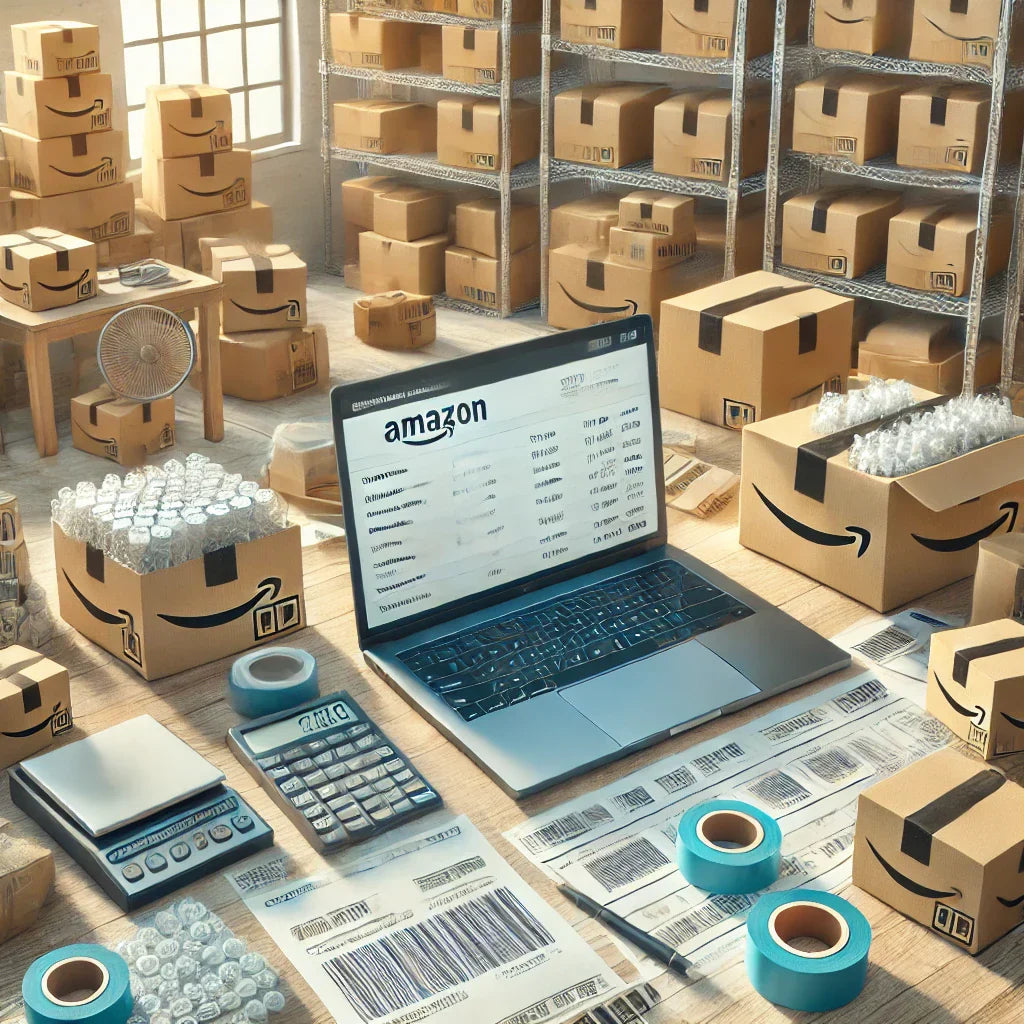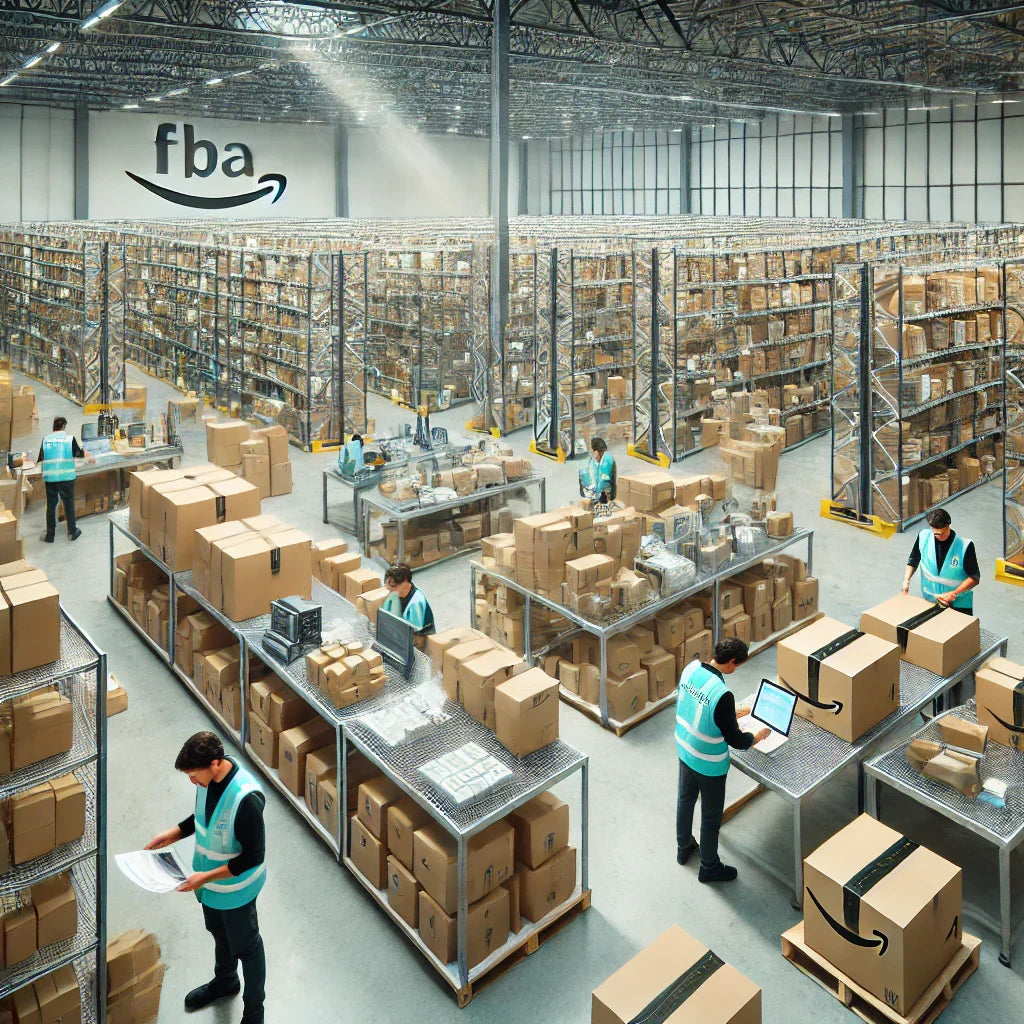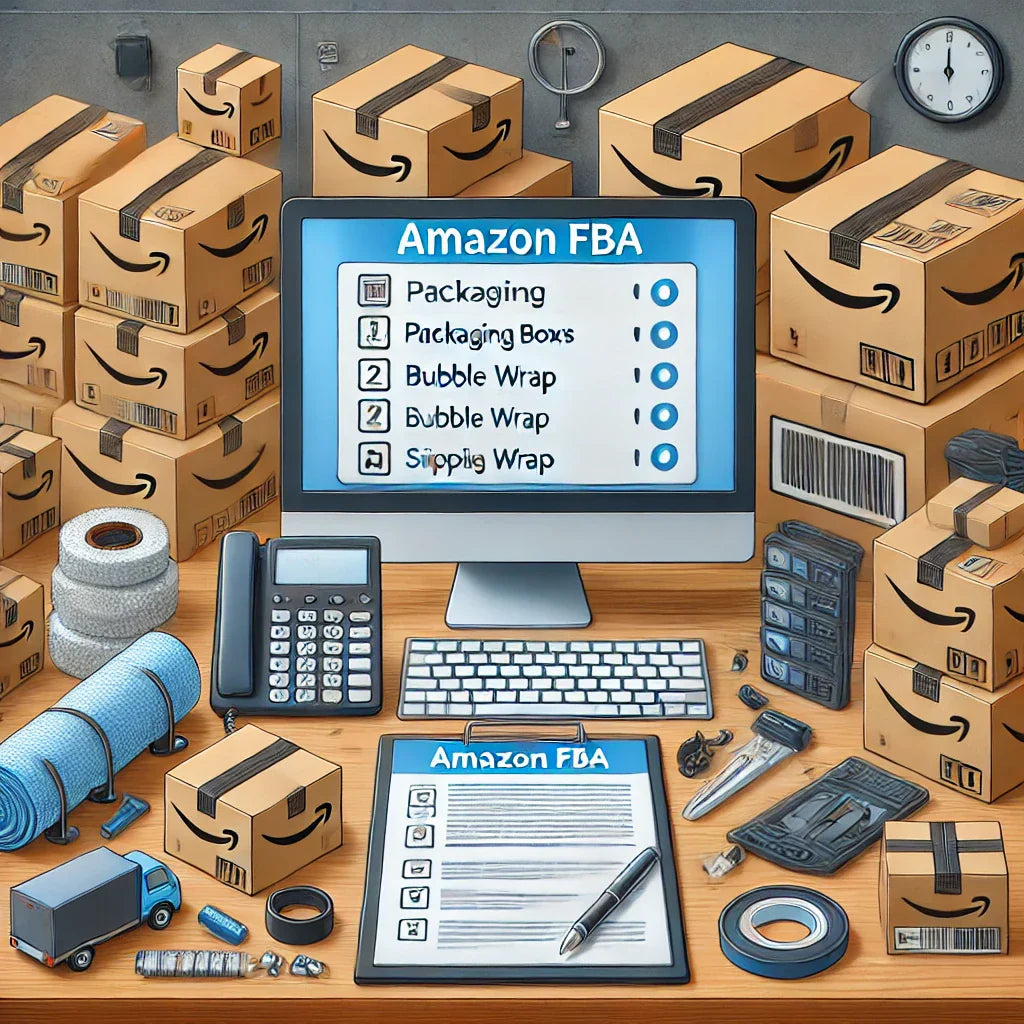Navigating the complexities of third-party logistics (3PL) can be a transformative yet challenging endeavor for businesses seeking to streamline their supply chains. As the demand for efficient and scalable logistics solutions continues to grow, companies increasingly turn to 3PL providers to manage their warehousing, transportation, and distribution needs. However, outsourcing logistics is not without its hurdles. From fluctuating costs and communication breakdowns to technology integration and meeting service-level agreements, businesses face various obstacles that can hinder their logistics goals. This article explores the common challenges in 3PL and offers actionable solutions to help companies optimize their logistics partnerships, ensuring smooth operations and strategic growth.

1. Managing Communication and Visibility in 3PL Operations
A key challenge in any 3PL relationship is maintaining effective communication and visibility. Many companies experience a disconnect between internal teams and their 3PL providers, which can lead to missed deadlines, incorrect shipments, and frustrated customers. This challenge intensifies as companies scale or work with multiple 3PL providers across different regions.
Overcoming Communication Barriers:
Clear communication channels are essential. Establishing regular check-ins, structured reporting methods, and using shared communication platforms can significantly improve information flow. Tools like Transport Management Systems (TMS) or Enterprise Resource Planning (ERP) systems with real-time tracking capabilities can bridge gaps, offering visibility into inventory levels, order statuses, and shipping timelines.
3PL Success Tips for Communication:
- Align on expectations and KPIs early in the relationship.
- Use technology to automate routine updates and alerts.
- Prioritize transparency with shared dashboards or portals accessible to both teams.
2. Balancing Cost Control and Quality of Service
Another significant challenge in 3PL is balancing cost-efficiency with the quality of service. Companies are often pressured to reduce logistics costs while maintaining high customer satisfaction levels. This balance can be hard to achieve, especially in volatile economic conditions where freight rates, fuel costs, and labor shortages may lead to unexpected price surges.
Strategies for Cost Control Without Compromising Quality:
It’s crucial to evaluate where logistics budgets are spent. Collaborate with your 3PL provider to find solutions, such as consolidating shipments to maximize loads, utilizing multi-modal transport options, or negotiating bulk rate discounts. Regular audits and performance reviews can also highlight areas for savings without impacting the quality of service.
3PL Success Tips for Cost Management:
- Develop flexible contracts with clear SLAs tied to performance.
- Monitor and adjust strategies as demand and costs fluctuate.
- Encourage collaboration with your 3PL on cost-saving initiatives, such as seasonal rate negotiations.
3. Integrating Technology and Data Sharing
In a world driven by technology, integrating systems and sharing data seamlessly with 3PL providers has become a significant logistical challenge. When systems don’t sync, companies miss out on real-time updates, data accuracy, and efficient workflows, which can hinder decision-making and slow down operations.
Solving Integration Challenges in 3PL:
Investing in compatible technology and ensuring that systems can communicate is essential. APIs, EDI, or cloud-based logistics platforms can offer efficient ways to share data, track shipments, and manage inventory with minimal manual intervention. Collaboration between IT teams on both sides can also streamline the integration process, setting up automated workflows and data syncs.
3PL Success Tips for Technology Integration:
- Select a 3PL provider with a flexible IT infrastructure that can accommodate your systems.
- Regularly review and upgrade tech solutions to stay compatible with industry standards.
- Maintain an open line with 3PL IT teams to promptly resolve data-sharing issues.
4. Ensuring Regulatory Compliance and Risk Management
For companies handling cross-border or regulated goods, compliance with local and international regulations can be challenging. Non-compliance risks range from fines to shipment delays, which can impact customer satisfaction and business reputation.
How to Overcome Compliance and Risk Management Issues:
Regularly reviewing compliance requirements with your 3PL provider and updating protocols as needed is critical. Leveraging technology that tracks documentation and regulatory updates can also prevent compliance lapses. Additionally, planning for risk mitigation through contingency planning, insurance, and alternative routes or suppliers can offer security.
3PL Success Tips for Compliance:
- Work with 3PL providers with established compliance expertise.
- Use compliance management software to streamline regulatory updates.
- Conduct regular audits to ensure ongoing adherence to laws and standards.
5. Maintaining Flexibility and Scalability
As businesses grow, they need a logistics partner that can scale to match demand. However, the rapid scaling of logistics operations poses challenges related to capacity, labor, and facility space, especially during peak periods.
Strategies for Flexibility and Scalability:
A strategic partnership with a 3PL provider that offers scalable solutions can alleviate these issues. Discussing long-term growth plans with your 3PL provider ensures they can allocate resources as needed. Consider providers with multi-location facilities or flexible warehousing options, such as shared warehousing during peak seasons.
3PL Success Tips for Scalability:
- Collaborate on capacity planning during high-demand periods.
- Choose a provider with nationwide or multi-location distribution centers.
- Incorporate flexible warehousing arrangements, like temporary storage options.
6. Achieving Inventory Accuracy and Stock Management
Managing inventory across various locations and with multiple 3PL providers can be challenging. Inaccuracies in stock levels can result in stockouts, overstocking, or order fulfillment issues, all of which affect customer satisfaction and profitability.
Overcoming Inventory Management Challenges:
Implementing real-time inventory tracking systems and integrating them with your 3PL’s systems can help. Working with a 3PL provider experienced in inventory control can ensure optimized stock levels, timely replenishments, and minimized errors.
3PL Success Tips for Inventory Management:
- Use advanced analytics for inventory forecasting and optimization.
- Ensure regular cycle counts and audit practices with the 3PL provider.
- Leverage technology, like barcode scanning and RFID, to boost accuracy.
7. Addressing Seasonal Demand Fluctuations
Demand volatility is another challenge faced by businesses using 3PL. Seasonal demand fluctuations or sudden market shifts require 3PLs to adjust resources, staff, and transportation schedules, which can lead to logistical bottlenecks.
Strategies to Tackle Seasonal Demand Variability:
Forecasting demand based on historical data and collaborating with your 3PL provider can smooth out seasonal spikes. Developing a pre-season or post-season shipping strategy with alternative logistics plans can mitigate disruptions and help scale operations efficiently during peak times.
3PL Success Tips for Demand Management:
- Share demand forecasts with the 3PL provider well in advance.
- Use scalable, on-demand warehousing options for peak seasons.
- Establish contingency plans for unexpected shifts in demand.
8. Optimizing Delivery Times and Customer Satisfaction
One of the most critical aspects of logistics is meeting customer expectations for timely deliveries. However, 3PL providers sometimes face challenges like route inefficiencies, vehicle breakdowns, or unforeseen delays that affect on-time delivery rates.
Overcoming Delivery Challenges for Improved Satisfaction:
Route optimization software and data analytics can provide 3PL providers with the tools needed to minimize delays. Collaborating on realistic delivery timelines and offering proactive customer notifications also help build customer trust and improve the overall experience.
3PL Success Tips for Delivery Optimization:
- Implement a real-time delivery tracking system for transparency.
- Use data to identify and resolve recurring delivery bottlenecks.
- Set up proactive customer notifications for any expected delays.
9. Ensuring Workforce Availability and Quality of Service
Labor shortages and workforce issues are prevalent in the logistics industry, affecting 3PL providers' ability to meet service expectations. With warehouse and driver shortages rising, these challenges significantly impact the quality of service provided by 3PLs.
Strategies to Overcome Labor Challenges in 3PL:
Flexible staffing solutions, cross-training employees, and working with providers that invest in workforce management can address labor shortages. Companies may also look for 3PLs that invest in technology, like automated picking and sorting, to minimize dependency on labor.
3PL Success Tips for Workforce Optimization:
- Seek providers that emphasize workforce training and retention.
- Consider 3PLs with automation and robotics to boost efficiency.
- Discuss contingency plans for labor shortages with your provider.
![]()
10. Improving Packaging and Handling Practices
Efficient packaging and handling practices are essential for minimizing product damage, reducing shipping costs, and enhancing customer satisfaction. However, variations in handling procedures and inadequate packaging can lead to increased returns and customer dissatisfaction.
How to Enhance Packaging and Handling Efficiency:
Develop standardized packaging and handling guidelines that the 3PL provider must adhere to. Regular reviews and audits of these practices can help identify areas for improvement. Collaborating with 3PLs that specialize in specific products can also improve handling practices, ensuring safe and efficient delivery.
3PL Success Tips for Handling and Packaging:
- Establish clear packaging standards and guidelines.
- Review handling practices periodically to reduce damage rates.
- Look for providers with specialized experience in handling delicate or high-value goods.
11. Enhancing 3PL Provider Accountability and Performance Tracking
One of the most critical challenges businesses face with 3PL partners is ensuring accountability and consistent performance. Without clear standards and regular evaluations, it’s difficult to gauge the effectiveness of a 3PL provider, which can lead to missed deadlines, inventory issues, and poor customer satisfaction. Holding a 3PL provider accountable requires establishing measurable performance indicators and implementing a structured system for tracking results.
Setting Key Performance Indicators (KPIs)
Establishing clear KPIs is fundamental to measuring 3PL performance. KPIs should cover various aspects of logistics operations, such as order accuracy, on-time delivery rates, inventory accuracy, and cost management. Having standardized metrics allows businesses to objectively assess a 3PL provider’s performance over time and identify areas for improvement.
For instance, order accuracy—the percentage of orders fulfilled correctly—directly impacts customer satisfaction and return rates. If a 3PL partner has a consistently low order accuracy rate, it might indicate the need for better training, improved technology, or process adjustments.
3PL Success Tips for KPI Setting:
- Select KPIs that align with business goals, such as delivery speed or order accuracy.
- Regularly review and adjust KPIs as business needs evolve.
- Use benchmarking to compare a 3PL’s performance to industry standards.
Conducting Regular Performance Reviews
Periodic performance reviews foster transparency and continuous improvement. These reviews should be structured to evaluate whether a 3PL is meeting agreed-upon KPIs, and they can also be an opportunity to discuss emerging challenges or areas for enhanced efficiency. Reviews should include representatives from both companies to ensure a balanced discussion and create a joint commitment to improvement.
A review might focus on recent issues, such as delayed shipments, and examine root causes, like staffing shortages or transportation bottlenecks. With this insight, the business and 3PL provider can jointly develop solutions, such as adjusting staffing levels or implementing a backup transport plan.
3PL Success Tips for Performance Reviews:
- Schedule reviews quarterly or biannually to maintain accountability.
- Provide 3PLs with detailed performance reports ahead of each review.
- Use performance data to set improvement goals and track progress.
Incentivizing High Performance
An effective way to motivate 3PL providers to excel is through incentive structures linked to KPI achievement. For instance, implementing a bonus structure for hitting on-time delivery targets or reducing error rates can align the provider’s goals with those of the company. Incentives can also improve provider loyalty and encourage them to prioritize your business, particularly during peak seasons or times of high demand.
3PL Success Tips for Incentivizing Performance:
- Clearly define performance-based incentives in contracts.
- Tie incentives to KPIs that directly impact customer satisfaction.
- Consider both financial and recognition-based rewards to encourage excellence.
12. Navigating Cultural and Operational Differences
In today’s global economy, many businesses partner with international 3PL providers to leverage global distribution networks and reduce costs. However, managing 3PL operations across different regions introduces new challenges, including cultural and operational differences. These differences can impact communication, decision-making, and operational efficiency.
Understanding Regional Regulations and Customs
When working with international 3PL providers, it’s essential to understand regional regulations and customs. Different countries have unique laws regarding labor, safety standards, and environmental practices that can influence logistics operations. Compliance with these regulations is crucial to avoiding fines, shipment delays, or reputational damage.
For instance, the European Union has strict regulations on emissions for transportation vehicles, which may impact shipping practices compared to less regulated regions. Companies must collaborate with their 3PL providers to navigate these requirements and avoid potential legal or operational issues.
3PL Success Tips for Managing Regional Compliance:
- Work with 3PL providers who have strong compliance records in your target regions.
- Regularly review international regulatory changes with the 3PL.
- Establish a compliance team to oversee adherence to local laws and standards.
Bridging Cultural Gaps for Seamless Operations
Cultural differences in communication styles, decision-making processes, and management approaches can complicate relationships with international 3PL providers. For instance, some cultures may emphasize hierarchical decision-making, which might slow down responses during urgent situations. Recognizing and adapting to these cultural nuances helps avoid miscommunication and enhances collaboration.
3PL Success Tips for Cross-Cultural Collaboration:
- Train internal teams on cultural norms to improve cross-regional communication.
- Encourage open dialogue to address misunderstandings promptly.
- Build cultural awareness programs for smoother global operations.
13. Ensuring Sustainable and Environmentally Responsible Practices
With increasing global emphasis on environmental responsibility, sustainability has become a top priority for many companies. Customers and stakeholders expect businesses to adopt eco-friendly practices, making it crucial to collaborate with 3PL providers who prioritize sustainability. However, not all 3PLs have the resources or expertise to implement green logistics solutions, posing a challenge for environmentally conscious businesses.
Implementing Green Logistics Initiatives
Partnering with a 3PL provider that prioritizes green logistics can help reduce carbon footprints and minimize environmental impact. Initiatives might include adopting fuel-efficient transportation, optimizing routes to reduce mileage, and using eco-friendly packaging materials. Encouraging 3PL providers to participate in carbon-offset programs can also help achieve sustainability goals.
3PL Success Tips for Sustainable Practices:
- Choose 3PL providers who actively invest in green technologies and processes.
- Prioritize providers with a strong track record in emissions reduction.
- Use eco-friendly packaging and request that 3PLs implement recycling practices.
Measuring and Reporting Environmental Impact
For sustainability initiatives to be effective, companies should establish metrics for measuring environmental impact. Metrics like carbon emissions per shipment, energy consumption in warehouses, and recycling rates offer tangible ways to track progress. Reporting these metrics to stakeholders demonstrates a commitment to sustainability and helps identify areas for improvement.
3PL Success Tips for Environmental Impact Measurement:
- Set benchmarks for emissions, waste reduction, and recycling with your 3PL.
- Use data analytics to track the environmental impact of logistics operations.
- Publicly report sustainability metrics to increase transparency and accountability.

14. Managing Security and Data Privacy Risks
As more logistics operations become digitized, protecting data and ensuring security has become a significant concern. Data breaches or cyber-attacks on 3PL providers can compromise sensitive information, disrupt operations, and damage customer trust. Companies must proactively manage these risks by partnering with 3PL providers who prioritize data security and privacy.
Establishing Strong Cybersecurity Protocols
A robust cybersecurity framework is essential for protecting sensitive data and preventing unauthorized access. This includes implementing firewalls, encryption, and multi-factor authentication to secure data exchanges between companies and 3PL providers. Regular security audits and vulnerability assessments can also identify potential weak points in the system.
3PL Success Tips for Cybersecurity:
- Work with 3PL providers who adhere to industry-standard cybersecurity protocols.
- Conduct regular security audits and patch any vulnerabilities promptly.
- Implement data encryption and secure access controls for sensitive information.
Developing a Data Breach Response Plan
Despite preventative measures, data breaches can still occur, making it crucial to have a well-defined response plan. This plan should outline the steps to take in the event of a breach, including notifying affected parties, assessing the damage, and implementing corrective actions. Establishing an incident response team can help manage these situations quickly and minimize potential impact.
3PL Success Tips for Data Breach Preparedness:
- Draft a detailed data breach response plan with input from IT and legal teams.
- Train internal teams and 3PL providers on breach response procedures.
- Regularly test the response plan with simulated breaches to ensure readiness.
15. Addressing Capacity Constraints and Managing Surge Demands
Capacity constraints and surge demands are pressing challenges in the logistics sector, especially for businesses that experience seasonal peaks or sudden spikes in demand due to marketing campaigns or new product launches. 3PL providers often struggle to meet these increased demands without the necessary infrastructure, personnel, or transportation resources in place. Poorly managed surge demand can lead to delayed deliveries, stockouts, and diminished customer satisfaction.
Developing a Capacity Planning Strategy
To address capacity constraints, companies should work closely with their 3PL providers to develop a comprehensive capacity planning strategy. This involves analyzing historical data to predict peak seasons and preparing for potential surges. By forecasting demand and sharing these insights with 3PL partners, businesses can help ensure that providers have the resources necessary to handle increased volumes. This planning should account for warehousing, transportation, and staffing requirements during peak times.
For example, a retailer anticipating high demand during the holiday season can work with its 3PL to secure additional storage space or temporary staffing to accommodate the surge. Planning for increased demand before it arises can prevent disruptions and maintain service quality during critical times.
3PL Success Tips for Capacity Planning:
- Share sales forecasts and anticipated peak times with 3PL providers well in advance.
- Evaluate 3PL providers' scalability options, such as flexible warehouse space or temporary staffing.
- Implement contingency plans to handle unexpected surges, such as secondary transport or storage providers.
Utilizing Flexible Warehousing Solutions
Flexible warehousing allows companies to adjust their storage needs based on fluctuating demand without committing to long-term contracts. Many 3PL providers now offer on-demand warehousing solutions, which enable businesses to increase or decrease warehouse space as needed. This flexibility is especially valuable for companies with seasonal products or promotional campaigns, as it provides storage only when necessary and helps avoid high costs during slower periods.
Flexible warehousing can also facilitate rapid geographic expansion by enabling companies to secure storage space closer to their customers, reducing transit times and shipping costs. By leveraging on-demand warehousing options, businesses can manage capacity more efficiently and respond to demand fluctuations without excessive overhead.
3PL Success Tips for Flexible Warehousing:
- Work with 3PL providers that offer short-term warehousing contracts or on-demand options.
- Use geographic data to position inventory in flexible warehouses near high-demand areas.
- Monitor warehousing needs regularly and adjust capacity as demand patterns change.
Scaling Transportation Resources for Surge Periods
Transportation capacity is another significant concern during surge periods. Without adequate transportation resources, increased order volumes can lead to delays and missed delivery windows. Companies can mitigate these risks by working with 3PL providers that offer scalable transportation solutions. For instance, some 3PLs have access to a large network of carriers, which enables them to add additional vehicles during peak times.
Another strategy is to diversify transportation modes, such as using air freight for urgent shipments or rail transport for large, less time-sensitive shipments. Multi-modal transport options provide flexibility and can help ensure that deliveries are made on time even when demand is high.
3PL Success Tips for Transportation Scaling:
- Partner with 3PL providers that have a wide carrier network and can scale transportation resources.
- Develop multi-modal transport strategies for cost and time efficiency.
- Regularly review transit times and adjust routes or modes based on peak demand needs.
Leveraging Automation to Manage High Volumes
During periods of high demand, automation can enhance the efficiency of warehouse operations and help manage increased order volumes. Automated sorting, picking, and packing systems streamline workflows and reduce reliance on manual labor, which can be in short supply during surge periods. 3PL providers with automated systems can process orders more quickly and accurately, improving throughput and customer satisfaction during busy times.
Automation is especially valuable for e-commerce businesses, where rapid order fulfillment is essential. By collaborating with 3PL providers that invest in automation technologies, businesses can enhance their ability to meet peak demand without compromising accuracy or speed.
3PL Success Tips for Automation in High Demand:
- Choose 3PL providers with automated warehousing systems, especially for e-commerce fulfillment.
- Consider robotic picking and automated sorting for high-volume SKUs.
- Regularly review automation needs as demand grows to ensure scalability.
16. Enhancing Customer Experience Through 3PL Partnerships
Customer experience is increasingly becoming a competitive differentiator, and logistics plays a critical role in meeting customer expectations. Late deliveries, damaged goods, and poor communication from 3PL providers can significantly impact customer satisfaction and retention rates. Building a 3PL strategy that prioritizes customer experience requires intentional planning and collaboration to align service levels with customer expectations.
Prioritizing Timely and Accurate Deliveries
Timely delivery is one of the most important factors in customer satisfaction. Many customers now expect next-day or even same-day delivery, and any delays can damage the customer’s perception of the brand. Working with 3PL providers to establish consistent and accurate delivery timelines is essential, especially during high-demand periods.
3PL providers can use route optimization tools, GPS tracking, and proactive communication with carriers to minimize delays. Businesses should ensure that their 3PL providers have clear performance standards for on-time deliveries and that these metrics are regularly reviewed.
3PL Success Tips for Timely Deliveries:
- Set realistic, data-backed delivery timelines with your 3PL provider.
- Monitor on-time delivery rates and review performance regularly.
- Use route optimization tools to minimize transit times and avoid delays.
Implementing Proactive Customer Communication
Clear and proactive communication with customers is crucial to managing their expectations and maintaining satisfaction. When orders are delayed or rescheduled, customers should receive timely updates on the status of their shipments. Working with 3PL providers that offer real-time tracking solutions and automated notifications allows businesses to keep customers informed and reduce uncertainty.
Providing customers with self-service options, such as a tracking portal or delivery updates via SMS or email, can also enhance their experience. By integrating these communication features with the 3PL provider’s systems, businesses can create a seamless flow of information and foster trust with their customers.
3PL Success Tips for Customer Communication:
- Partner with 3PL providers that offer real-time tracking and automated notifications.
- Set up a customer portal where they can check order status and delivery ETAs.
- Provide proactive updates for any anticipated delays or changes in delivery.
Minimizing Product Damage and Returns
Frequent product damage during transit can lead to increased return rates and negatively impact customer satisfaction. This issue is often related to poor packaging practices or inadequate handling by the 3PL provider. Establishing strict packaging and handling standards with 3PL providers can help minimize damage rates and reduce the need for costly returns.
3PL providers should also implement quality control checks at various points along the supply chain to ensure products are handled carefully. In addition to preserving product integrity, these practices can significantly reduce return processing costs and improve the customer experience.
3PL Success Tips for Reducing Damage Rates:
- Set up clear packaging and handling guidelines that your 3PL provider must follow.
- Implement regular quality checks to ensure product integrity during transit.
- Provide feedback on damage reports to identify and address recurring issues.

17. Building Stronger Relationships with 3PL Providers
Building a successful 3PL partnership requires more than transactional agreements; it demands ongoing collaboration and open communication to create a relationship built on trust. A strategic relationship with a 3PL provider can create a mutually beneficial arrangement where both parties are invested in each other’s success. This approach helps companies achieve their logistics goals while allowing 3PLs to enhance service offerings and increase client retention.
Encouraging Open Communication and Feedback
Open and frequent communication is the foundation of a strong 3PL relationship. Regular check-ins with 3PL providers create opportunities to discuss upcoming changes, challenges, and feedback. A transparent communication framework encourages both parties to address issues proactively, reducing the risk of misunderstandings or unmet expectations.
Regular performance reviews and joint improvement meetings allow companies to provide feedback and discuss any challenges they encounter with the 3PL’s performance. When both sides are transparent and receptive to feedback, they can work together to enhance efficiency and resolve issues more effectively.
3PL Success Tips for Communication:
- Schedule regular check-ins with the 3PL team to discuss ongoing performance and areas for improvement.
- Create a formal feedback process that allows for constructive dialogue on both sides.
- Encourage both parties to address issues as they arise, rather than waiting for periodic reviews.
Establishing Long-Term Goals and Collaborative Planning
While short-term performance metrics are important, building a lasting relationship with a 3PL provider requires shared long-term goals. Collaborating on strategic planning, such as growth forecasts and scalability requirements, allows the 3PL provider to adapt to the company’s evolving needs. Companies should share their vision and expansion plans with the 3PL to enable proactive support.
For example, if a business plans to expand into new geographic markets, working with a 3PL provider that has warehousing and distribution capabilities in those areas can support a seamless transition. Establishing long-term goals also signals to the 3PL provider that the relationship is viewed as a partnership, motivating them to invest more resources and effort.
3PL Success Tips for Long-Term Planning:
- Discuss your business’s growth and expansion plans with the 3PL provider.
- Set shared long-term goals that outline both performance and strategic milestones.
- Plan for scalability and flexibility in your logistics operations to accommodate growth.
Investing in Joint Training and Development
Joint training initiatives for both in-house and 3PL teams can bridge knowledge gaps and align both parties on operational standards. Training programs may cover areas like order handling, inventory management, or customer service expectations, ensuring that the 3PL provider’s team understands your specific requirements. Joint training fosters collaboration and creates a shared understanding of company goals, making it easier to deliver consistent results.
Additionally, co-hosted workshops on emerging trends, such as sustainability or supply chain digitization, can help both companies stay informed and aligned on the latest industry practices. Investing in joint training improves operational alignment and strengthens the overall relationship.
3PL Success Tips for Training Initiatives:
- Collaborate with the 3PL provider on training sessions relevant to your business needs.
- Organize periodic workshops or seminars on industry best practices and trends.
- Encourage knowledge-sharing to ensure alignment on service standards and goals.
18. Evaluating and Evolving 3PL Partnerships
As businesses grow and logistics requirements evolve, it’s crucial to regularly assess the effectiveness of 3PL partnerships. An annual review process can help companies evaluate whether their 3PL provider continues to meet their needs and adjust expectations as needed. Effective evaluations allow businesses to optimize their logistics strategy and identify new opportunities for improvement.
Conducting an Annual 3PL Performance Review
An annual review of 3PL performance should assess the provider’s ability to meet agreed-upon KPIs, as well as evaluate their overall fit with the company’s current and future needs. The review can include both quantitative metrics, like delivery accuracy and inventory turnover, and qualitative aspects, like communication quality and responsiveness.
Annual performance reviews also allow companies to reassess terms, negotiate cost structures, and update service requirements as their business changes. Based on the review findings, companies can either renew their partnership with updated terms or explore alternative providers that may be a better fit.
3PL Success Tips for Annual Reviews:
- Develop a structured review process that evaluates both performance metrics and partnership quality.
- Involve cross-functional teams in the review process to provide a well-rounded perspective.
- Use review findings to set new goals, update terms, or identify potential areas for improvement.
Exploring New Technologies and Innovations
The logistics industry continues to evolve, with new technologies like AI-driven demand forecasting, blockchain for secure data sharing, and autonomous vehicles emerging as potential game-changers. Partnering with a 3PL provider willing to invest in these innovations can provide a significant competitive advantage. By regularly discussing emerging technologies and encouraging your 3PL provider to explore them, you can stay at the forefront of logistics advancements.
For example, AI-powered demand forecasting tools can help predict fluctuations more accurately, while blockchain solutions enhance data transparency and security. Companies should be proactive in exploring new solutions with their 3PL provider to drive continuous improvement and meet evolving customer expectations.
3PL Success Tips for Technology Innovation:
- Stay informed on logistics technology trends and discuss them with your 3PL provider.
- Encourage your provider to adopt innovative solutions that align with your logistics goals.
- Be open to pilot programs or beta testing new technologies in collaboration with your 3PL.
Reassessing the 3PL Relationship Based on Changing Business Needs
As businesses grow, their logistics needs often become more complex, requiring a higher level of service or specialized capabilities from their 3PL provider. Companies should periodically reassess their 3PL partnerships to ensure alignment with their long-term goals. If the current 3PL provider lacks the infrastructure or resources to meet evolving needs, it may be time to consider transitioning to a new provider.
Reassessing the relationship every few years, rather than simply renewing contracts, ensures that the 3PL provider can keep up with the company’s growth and ambitions. This proactive approach prevents bottlenecks and allows the business to maintain high standards as it expands.
3PL Success Tips for Reassessing Partnerships:
- Conduct a thorough review of the 3PL’s capabilities relative to your current logistics needs.
- Set criteria to evaluate whether the partnership aligns with future business objectives.
- If needed, explore alternative providers who can better meet evolving requirements.
19. Managing Multi-Channel Fulfillment Complexity with 3PL Providers
As businesses expand their reach through multiple sales channels, including e-commerce platforms, retail stores, and marketplaces, managing multi-channel fulfillment becomes increasingly complex. Each channel has distinct requirements for inventory management, order processing, and shipping timelines, posing significant challenges for 3PL providers. Effectively coordinating multi-channel fulfillment requires advanced planning, integration, and a strategic approach to meet customer expectations across every channel.
Coordinating Inventory Across Multiple Channels
When selling across multiple channels, inventory visibility is paramount to avoid stockouts, overselling, or delayed fulfillment. Ensuring inventory accuracy in a multi-channel environment requires seamless integration between the company’s order management systems and the 3PL provider’s warehouse management system (WMS). This integration enables real-time inventory updates and helps maintain consistency across platforms.
For example, if an item sells on an e-commerce platform, the inventory count should automatically update to reflect the current stock level on all other channels, including brick-and-mortar stores or wholesale accounts. Companies should work with their 3PL provider to set up this integration and establish processes to ensure accurate stock levels.
3PL Success Tips for Multi-Channel Inventory Management:
- Integrate your order management system with the 3PL provider’s WMS for real-time inventory visibility.
- Use SKU mapping to accurately track products across various channels.
- Conduct regular inventory audits to ensure accuracy and identify discrepancies.
Customizing Fulfillment Strategies for Each Sales Channel
Each sales channel has specific requirements for packaging, shipping speeds, and customer preferences. For instance, customers on an e-commerce platform may expect faster, often two-day, delivery with branded packaging, whereas wholesale orders might require bulk packaging and have more flexible delivery timelines. Working closely with a 3PL provider to develop customized fulfillment workflows for each channel ensures that customer expectations are met consistently.
Establishing clear service-level agreements (SLAs) for each channel is essential to set standards for order processing times, delivery methods, and packaging requirements. SLAs serve as a reference for the 3PL provider and ensure that they understand and meet the unique demands of each channel.
3PL Success Tips for Channel-Specific Fulfillment:
- Set up distinct SLAs and packaging guidelines for each sales channel.
- Work with the 3PL to develop channel-specific workflows that meet varied customer expectations.
- Regularly review channel performance metrics to identify and address any fulfillment gaps.
Managing Returns Efficiently Across Multiple Channels
Returns are inevitable, especially in e-commerce, and managing them efficiently across multiple channels can be challenging. The return process differs for each channel, as retailers, marketplaces, and direct-to-consumer platforms have unique requirements for processing returns, handling refunds, and restocking. A streamlined reverse logistics strategy, supported by the 3PL provider, can help companies manage returns effectively and minimize disruptions.
Working with a 3PL provider that offers dedicated reverse logistics capabilities, such as inspection, restocking, and refurbishment, can simplify returns management. Establishing clear return protocols for each channel ensures a smooth process for both customers and the business.
3PL Success Tips for Multi-Channel Returns Management:
- Establish channel-specific return protocols and integrate them with the 3PL’s systems.
- Use automation to speed up return processing, inspection, and restocking.
- Track return rates and reasons by channel to identify patterns and improve product quality or customer service.
Balancing Inventory Levels Across Channels to Prevent Stockouts
Balancing inventory levels across multiple channels is essential to prevent stockouts or overstocking. Demand forecasting becomes more complex in a multi-channel environment, as each platform may have different sales patterns and peak periods. Collaborating with a 3PL provider on demand forecasting and inventory allocation helps companies avoid stock imbalances that could disrupt fulfillment.
Leveraging advanced analytics and historical data can improve forecasting accuracy, allowing businesses to allocate inventory effectively. By partnering with a 3PL provider that offers demand forecasting tools, businesses can make more informed decisions and reduce the risk of stockouts.
3PL Success Tips for Inventory Balancing:
- Use demand forecasting tools to predict sales trends for each channel.
- Collaborate with the 3PL provider on inventory allocation strategies to balance stock levels.
- Set up safety stock thresholds to prevent stockouts during unexpected demand surges.
Implementing Multi-Channel Reporting and Analytics
Accurate reporting and analytics are crucial for managing multi-channel fulfillment, as they provide insights into inventory levels, order accuracy, and fulfillment speed across different platforms. Implementing robust analytics tools with the help of the 3PL provider allows businesses to monitor channel-specific KPIs, evaluate performance, and make data-driven decisions.
Regularly reviewing performance metrics, such as order accuracy rates, inventory turnover, and customer feedback, can help companies optimize their fulfillment strategy. By using multi-channel reporting, businesses can identify trends, address issues proactively, and improve the overall customer experience.
3PL Success Tips for Reporting and Analytics:
- Implement multi-channel analytics to track performance metrics across platforms.
- Use data insights to identify fulfillment bottlenecks and areas for improvement.
- Schedule regular performance reviews with the 3PL provider to assess channel performance.

Conclusion
While there are numerous challenges associated with third-party logistics, businesses can effectively address these hurdles with proactive planning, technology adoption, and strong partnerships with their 3PL providers. By focusing on clear communication, efficient cost management, and maintaining a high degree of flexibility, companies can turn 3PL challenges into growth opportunities. Partnering strategically with the right 3PL provider and leveraging best practices allows businesses to streamline logistics, boost customer satisfaction, and ultimately drive long-term success.
Read More
- What is 3PL? A Comprehensive Guide to Third-Party Logistics Services
- The Benefits of 3PL: Why Your Business Should Consider Third-Party Logistics
- 3PL vs. 4PL: Understanding the Differences and Choosing the Right Solution
- How to Choose the Best 3PL Provider for Your Business Needs
- The Future of 3PL: Trends and Innovations in Third-Party Logistics
- 3PL Pricing Explained: What to Expect and How to Optimize Costs



